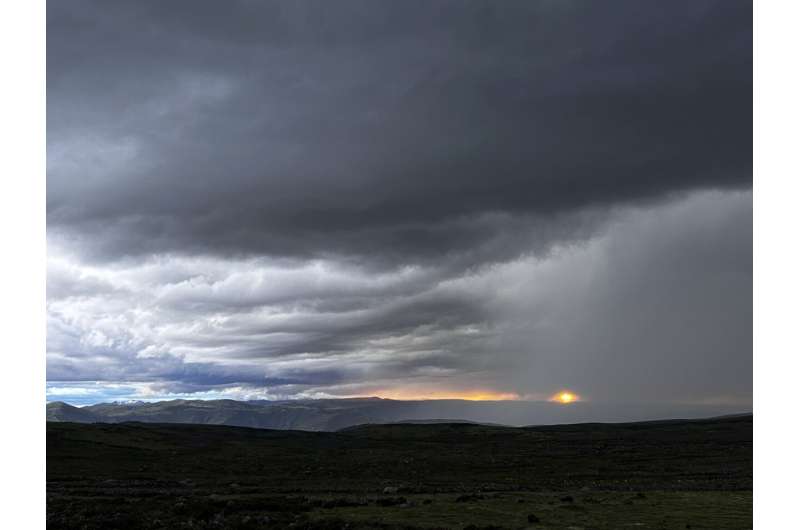This article has been reviewed according to Science X's editorial process and policies. Editors have highlighted the following attributes while ensuring the content's credibility:
fact-checked
trusted source
proofread
Models provide new insights into relationship between Asia-Pacific upper-tropospheric temperatures and precipitation

Pacific Oscillation (APO) is a recently identified atmospheric teleconnection pattern in the Asia-Pacific sector characterized by a seesaw vibration of upper-tropospheric temperatures between Asia and the North Pacific. Teleconnections are links between weather phenomena at widely separated locations. The APO has substantial impacts on atmospheric circulation, monsoon rainfall, and cyclone activity, among other phenomena. Therefore, the link between the APO and climate change has become a hot topic within the climate change community.
The Coupled Model Intercomparison Project (CMIP) brings together the highest quality climate models for studying the possible climatic changes in the future. Thus, whether the models involved in the latest phase of this project (CMIP6) can reasonably capture the APO-related precipitation and atmospheric anomalies—to then be used to further investigate their future changes—is an important question.
To address this, the research group of Prof. Wei Hua from Chengdu University of Information Technology, China, selected 32 models from CMIP6 and evaluated their capability in modeling the influence of the preceding-August APO on the following early-autumn (September) precipitation over Southeast China and associated atmospheric anomalies, as well as its future projection during 2021–2040 (near-term), 2041–2060 (mid-term) and 2081–2100 (long-term) under different Shared Socioeconomic Pathways (SSPs: SSP2-4.5 and SSP5-8.5), which are scenarios of projected socioeconomic global changes up to 2100 used by relevant stakeholders to derive greenhouse gas emissions scenarios with different climate policies. The associated research paper has recently been published in Atmospheric and Oceanic Science Letters.
According to the findings of the study, two-thirds of the selected CMIP6 models yielded positive correlations between the APO and Southeast China precipitation that conformed to observations.
"The BMME, which means 'best' model ensemble, simulated both the APO-associated precipitation and the atmospheric anomalies effectively. In the near-, mid- and long-term future projections under both SSPs, the BMME projected persistent negative correlations between the APO and the East Asian jet, and the APO-Southeast China precipitation and East Asian jet-Southeast China precipitation relationships were projected to weaken," explains Prof. Hua.
Overall, the BMME produced a reasonable simulation of the impact of the APO on early-autumn precipitation in Southeast China. However, considerable discrepancies were evident among the changes projected by individual models, with only the projected changes in the APO-East Asian jet relationship showing good model agreement.
"Therefore, the projected results should be interpreted with caution, and efforts to reduce model uncertainties in modeling the APO and associated atmospheric anomalies should be further made in the future," concludes Prof. Hua.
More information: Changji Xia et al, Impact of the Asian–Pacific Oscillation on early autumn precipitation over Southeast China: CMIP6 evaluation and projection, Atmospheric and Oceanic Science Letters (2023). DOI: 10.1016/j.aosl.2023.100389
Provided by Chinese Academy of Sciences




















